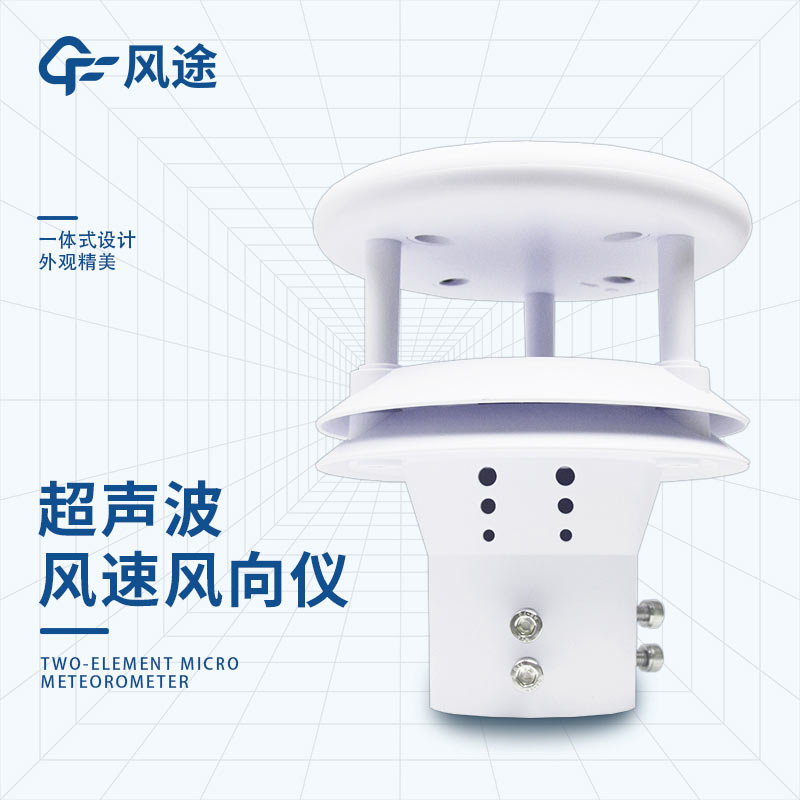Tianqiong Sensor IOT Technology Co., Ltd
Sales Manager:Ms. Emily Wang
Cel,Whatsapp,Wechat:+86 15898932201
Email:info@fengtutec.com
Add:No. 155 Optoelectronic Industry Accelerator, Gaoxin District, Weifang, Shandong, China

Sales Manager:Ms. Emily Wang
Cel,Whatsapp,Wechat:+86 15898932201
Email:info@fengtutec.com
Add:No. 155 Optoelectronic Industry Accelerator, Gaoxin District, Weifang, Shandong, China
time:2025-08-29 09:05:52 source:Weather Station viewed:205 time
The core component of an ultrasonic anemometer is the ultrasonic transducer—a device specifically designed to transmit and receive ultrasonic waves. The entire equipment contains four such transducers. It adopts the ultrasonic time-difference method to measure wind speed and wind direction. The principle is based on the superposition of the propagation speed of sound waves in the air and the airflow speed: when the propagation direction is consistent with the wind direction, the speed increases; when it is opposite, the speed decreases. Under fixed detection conditions, the propagation speed of ultrasonic waves has a clear functional relationship with the wind speed, and accurate wind speed and wind direction data can be obtained through calculation.
The propagation speed of sound waves is significantly affected by temperature. In response to this, the ultrasonic wind speed sensor is equipped with two detection channels, which respectively measure the propagation of sound waves in two opposite directions. Through data comparison and compensation calculation, the interference of temperature on the sound wave speed can be offset, so there is no need to consider this factor.
In general, the ultrasonic anemometer is lightweight, has no moving parts inside, and features sturdiness and durability. During use, it requires no regular maintenance or on-site calibration, and can output wind speed and wind direction data simultaneously. Compared with mechanical anemometers and wind vanes, it overcomes the inherent defects of the latter in terms of structural stability, maintenance requirements, and environmental adaptability. It can work stably around the clock and for a long time in various weather conditions, and its application range is constantly expanding.

In the water conservancy and water services industry, water regime monitoring is a fundamental task. Especially during summer when natural disasters occur frequently, monitoring enables disaster prediction and provides data support for formulating flood prevention and relief plans. With the applicat...
Handheld Weather Station FT-SQ8+ is a "meteorological monitoring expert" trusted by numerous users.Equipped with a 3.5-inch LCD screen, the FT-SQ8+ can clearly display a wealth of elements such as wind speed, wind direction, average wind speed, temperature, humidity, atmospher...
Negative ions, known as the "vitamins in the air", are beneficial to human health. Medical research shows that a high-concentration negative ion environment can effectively improve human immunity, promote metabolism, soothe nerves, relieve fatigue, and even have auxiliary therapeutic effec...
Due to the special nature of their production processes, chemical plants have strict requirements for meteorological condition monitoring. This need stems from two core backgrounds: first, from a safety perspective, many chemical materials are extremely sensitive to wind speed, wind direction, and o...